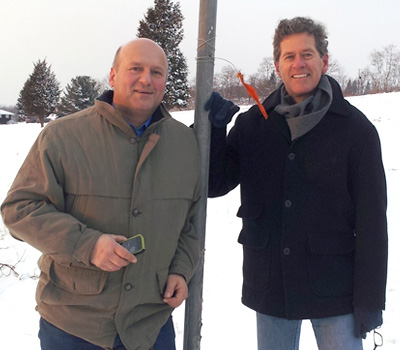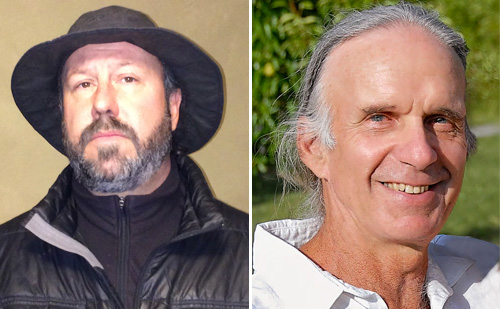

may halt their vineyard project on Seneca Lake until the futur
More than 50 wineries surround Seneca, the heart of Finger Lakes wine country. Eighteen of them are located in Schuyler County at the lake’s southern end, where Houston-based Crestwood Midstream began work on its facilities in late October. At that time efforts to block the project on town, county and state levels had failed and the Federal Energy Regulatory Commission (FERC) gave its approval. As construction began, protesters showed up to block truck entrances. Crestwood called in county police on October 29. Since then the grassroots organization We Are Seneca Lake (WASL) has staged weekly, non-violent demonstrations resulting in almost 100 arrests for trespassing, among them two winery owners: Will Ouweleen of Eagle Crest Vineyards on Hemlock Lake and Phil Davis of Damiani Wine Cellars on Seneca. Protesters have ranged in age from 19 to 90. They have faced either a $375 fine or 15 days in jail, although as their numbers increase, jail terms have begun to soften.
Crestwood Midstream is an $8 billion oil-and-gas services holding company with operations throughout the U.S. It is preparing the salt caverns for the storage of two billion cubic feet of methane, with plans to expand capacity to ten billion. The caverns extend below lake level. The company has also proposed a separate liquid propane (LPG) storage facility still under review by the NYS Department of Environmental Conservation. Production is slated to move in and out of the caverns by pipeline, trucks and a rail line that crosses the spectacular Watkins Glen gorge, alarming critics with the potential for accidents, catastrophic spills and tanker-truck convoys on country roads savored by tourists. The storage of pressurized gas in other salt caverns has had a history of leaks and occasional explosions. In 2001, natural gas migrated eight miles from a salt-cavern storage facility in Kansas, punched into several abandoned wells and exploded, destroying businesses in downtown Hutchinson and killing two people in a nearby home. The Crestwood caverns are a few miles from the village of Watkins Glen. They are also central to vast Marcellus Shale gas fields that the industry hopes will soon be released from a moratorium on hydrofracking in New York State. Governor Andrew Cuomo has promised to get off the fence and decide by the end of the year whether to permit fracking.


Directly across Seneca Lake from the salt caverns, California winemaker Paul Hobbs and Mosel icon Johannes Selbach have begun planting a 45-acre vineyard of (mostly) riesling. More “outsiders,” they represent the most ambitious European-connected venture into the Finger Lakes wine renaissance to date. On December 7, Hobbs-Selbach and the investors at Forge Cellars (the other recent foreign venture on Seneca) both made public letters to Gov. Cuomo calling on him to block the Crestwood project. Hobbs and Selbach state “we are considering holding off the further development of these vineyards and a visitors center, a multimillion dollar project, until the question of gas storage expansion is resolved. We believe that the outcome of both the natural gas and LPG storage expansion struggle… will have an extremely positive or severely negative impact on future Finger Lakes wine industry and tourism investments from around the world.”
Two visions of the future for Seneca Lake face-off across the water. ■
Postscript, December 20, 2014:
As year-end approaches, the ranks of protesters at Crestwood gates have swelled; more than 150 arrested as of December 20. Governor Cuomo surprised everyone in mid-December by indicating he will ban horizontal fracking in New York State. Opponents of the gas storage project are vowing to strengthen the protest, hoping the fracking ban will cause Crestwood to rethink its plans.
This is a W&S web exclusive feature.
This is a W&S web exclusive. Get access to all of our feature stories by signing up today.















